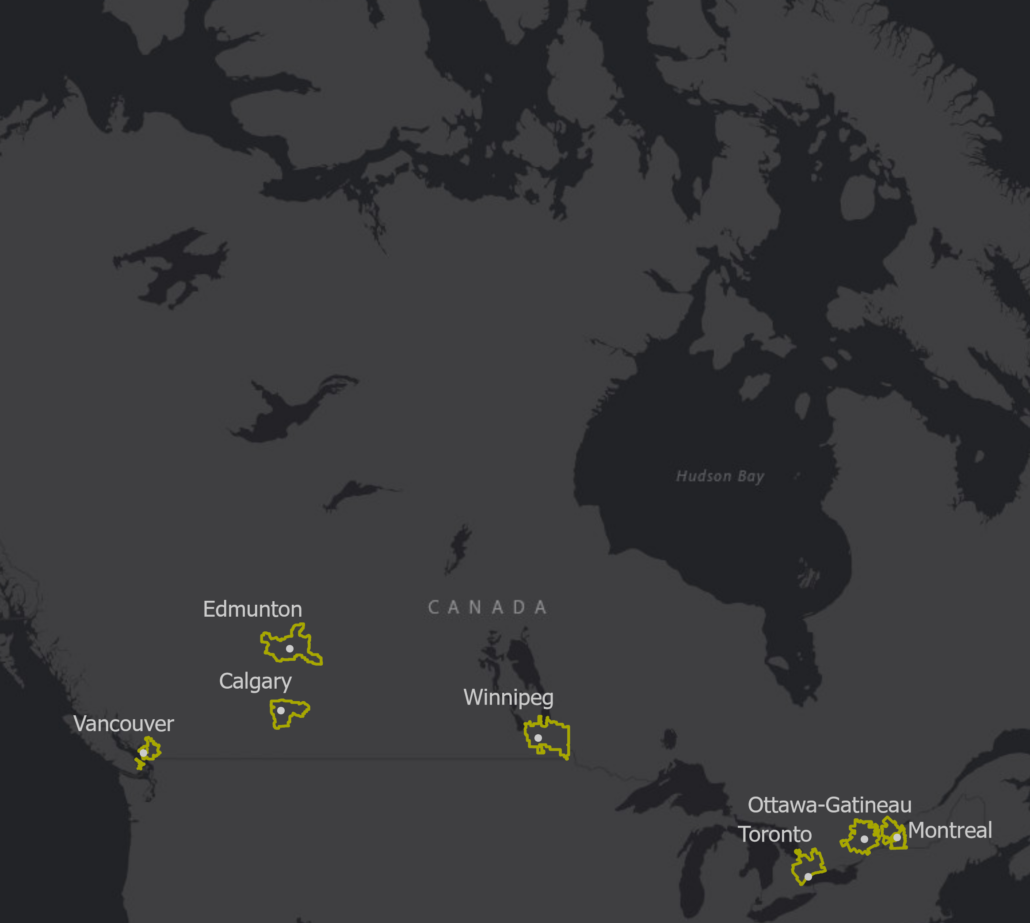The population of Canada is 36 million. About half of Canadians live in the 7 largest cities included in the database. Despite a lower share of single-family detached housing than other Anglo-Saxon countries (47% of the housing stock in urban regions), Canadian cities are low density.
| Data overview | Summary Statistics | ||
|---|---|---|---|
| # of cities | 7 | Average city population (in millions) | 2.6 |
| Year of data | 2016 | Average density | 384 |
| Average population of base geographic unit | 4791 | Average population-weighted density | 3338 |
| Income definition | Total gross annual household income Lowest category: 1 – 5000 Highest category: 200000 and over | Average income segregation (from 0, lowest, to 100, highest) | 7.4 |
| # of income categories | 19 | Income inequality (80/20 income percentile ratio) | 3.2 |
| % of population living in central city (5km radius from city hall) | 17.8 |
Canadian data are from Statistics Canada/Statistique Canada
Income is from the 2016 Census Profile and is collected as follows:
‘Total income’ refers to the sum of certain incomes (in cash and, in some circumstances, in kind) of the statistical unit (household) during a specified reference period. (Full description)
Geographic data are based on the Census Tract.


